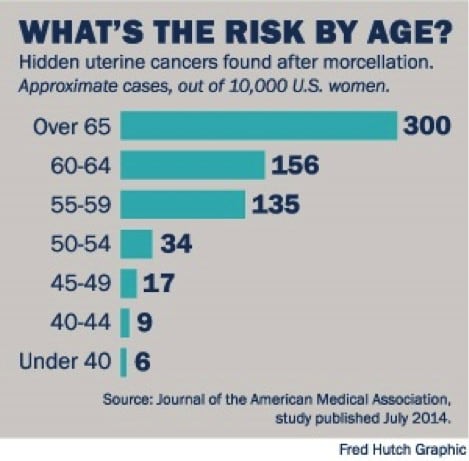Fibroid Surgery Will Not Give You Cancer
By Sheree Crute
Last year, the story of Amy Reed, a doctor whose fibroid surgery had contributed to the spread of a rare cancer, led to a campaign to ban a procedure called morcellation, which involves cutting a fibroid into very small pieces so that it can be removed through a small incision. Since then, increasingly frightening stories have appeared suggesting that the procedure puts black women at a disproportionately high risk of spreading an overlooked cancer. To date, there’s no research proving that to be true.
Here’s what you need to know to protect yourself and understand your real risk.
What’s the issue? In some, rare cases, it is possible for a woman to have a type of cancerous tumor — in Reed’s case, a uterine leiomyosarcoma (ULMS) — hiding inside a fibroid. If a surgeon is unaware of the cancer and performs a morcellation, a small piece of the cancer may be left behind. If that occurs, it can “develop its own blood supply and grow,” explains Charles Rardin, M.D., a urogynecologic surgeon and director of the robotic surgery program at Women’s & Infants Hospital of Rhode Island.
Are you at risk? “The current estimate is 1 in about 400 women [see infographic] may have a hidden ULMS found after surgery,” Rardin says. “That means each woman has a risk of 0.25 percent.” ULMS accounts for only 2 percent of all types of uterine cancer. While African-American women are a higher risk for other types of uterine cancer, ULMS is rare in all women.
Do I have to worry if I’ve already had morcellation? No. When you have surgery, the tissue removed from your body is tested. “If your doctor has not told you there’s a cancer, there’s no need to be concerned or to have further tests,” Rardin says.
Are fibroids cancerous? Rarely. About 1 in 1,000 fibroids are cancerous. In addition, “ULMS can exist without fibroids,” Rardin explains.
Why can’t my doctor test for ULMS? “There’s no biopsy that can look at every fibroid, before surgery,” Rardin says. “The Mayo Clinic is currently studying a blood test/MRI screening for women at very high risk, but it’s far too early to tell if it will work for all women.”
How can I eliminate my risk? “Surgery is always a matter of informed consent,” Rardin says. “Make sure you tell your surgeon that you do not want a morcellator used during your procedure. You may still be able to have a minimally invasive myomectomy or hysterectomy through a small incision in the abdomen or through the vagina.”
What’s next? In July, the Food and Drug Administration held hearings to assess the risk of morcellation spreading cancer and determine a course of action. They have made several recommendations for women and their physicians, including that women provide informed consent beforehand and that physicians rethink the use of the device.
Bottom line: You do not have to expose yourself to this risk at all. If your doctor cannot perform surgery without a morcellator, find a more skilled surgeon.
“Every time you mention fibroids, somebody knows somebody who has them,” Tanika Gray Valbrun says. “It’s so familiar to people, but there’s no national recognition for it.” So Gray Valbrun founded The White Dress Project. Read Errin Haines Whack’s article to learn more about their efforts and why so many women are wearing white dresses.
Other key organizations in the fight against fibroids include:
- The Fibroid Foundation – a patient advocacy partner of the Mayo Clinic fibroid research team. The mission of the Fibroid Foundation is to be a life-enhancing resource for the millions of women with fibroids, and a catalyst to bring attention to more holistic solutions to women’s health.
- The Fibroids Project – an online community and website dedicated to women suffering from uterine fibroids. The organization’s mission is to be a resource to women and medical professionals by providing information on the latest programs, procedures and research.
- The National Uterine Fibroids Foundation – A group organized to engage in charitable, educational and scientific activities related to the care and treatment of women who have uterine fibroids or related conditions of the reproductive system.
Show Us Your White Dress!
Upload selfies and other photos of you in a white dress to our Facebook page!
Beating Fibroids: Find the Best Treatment for You










